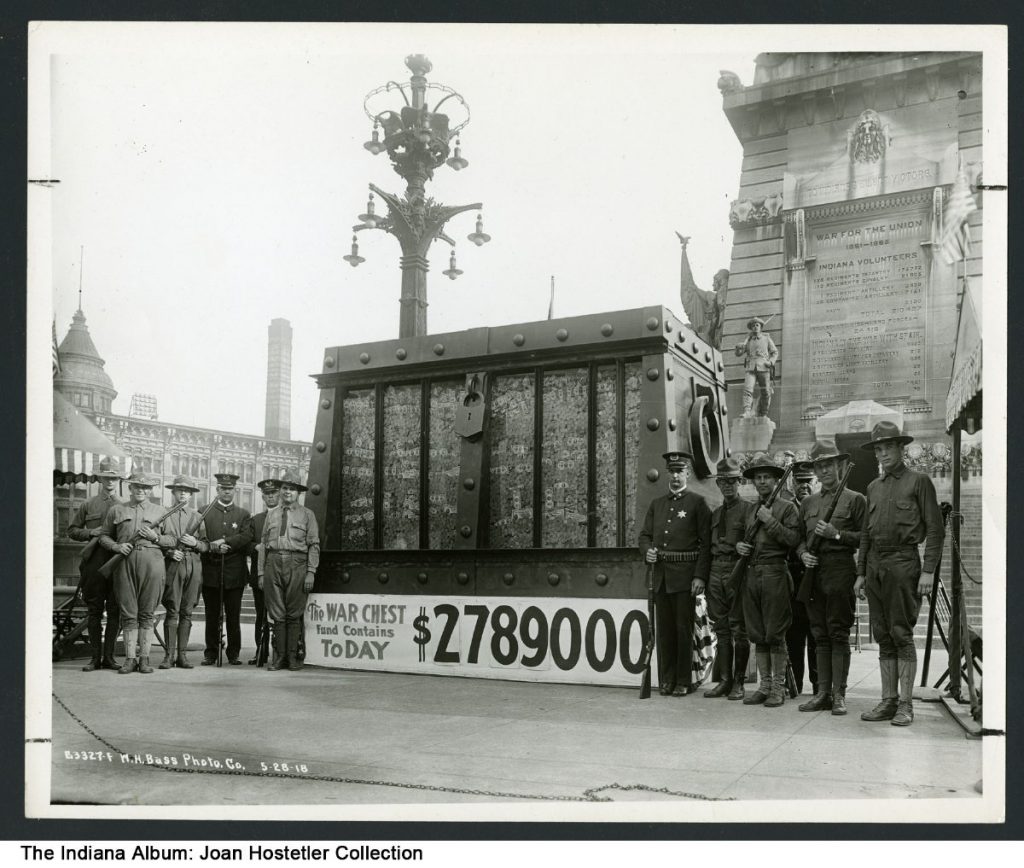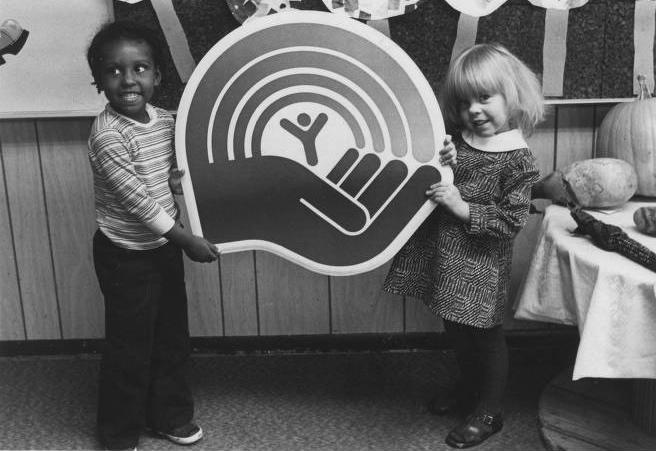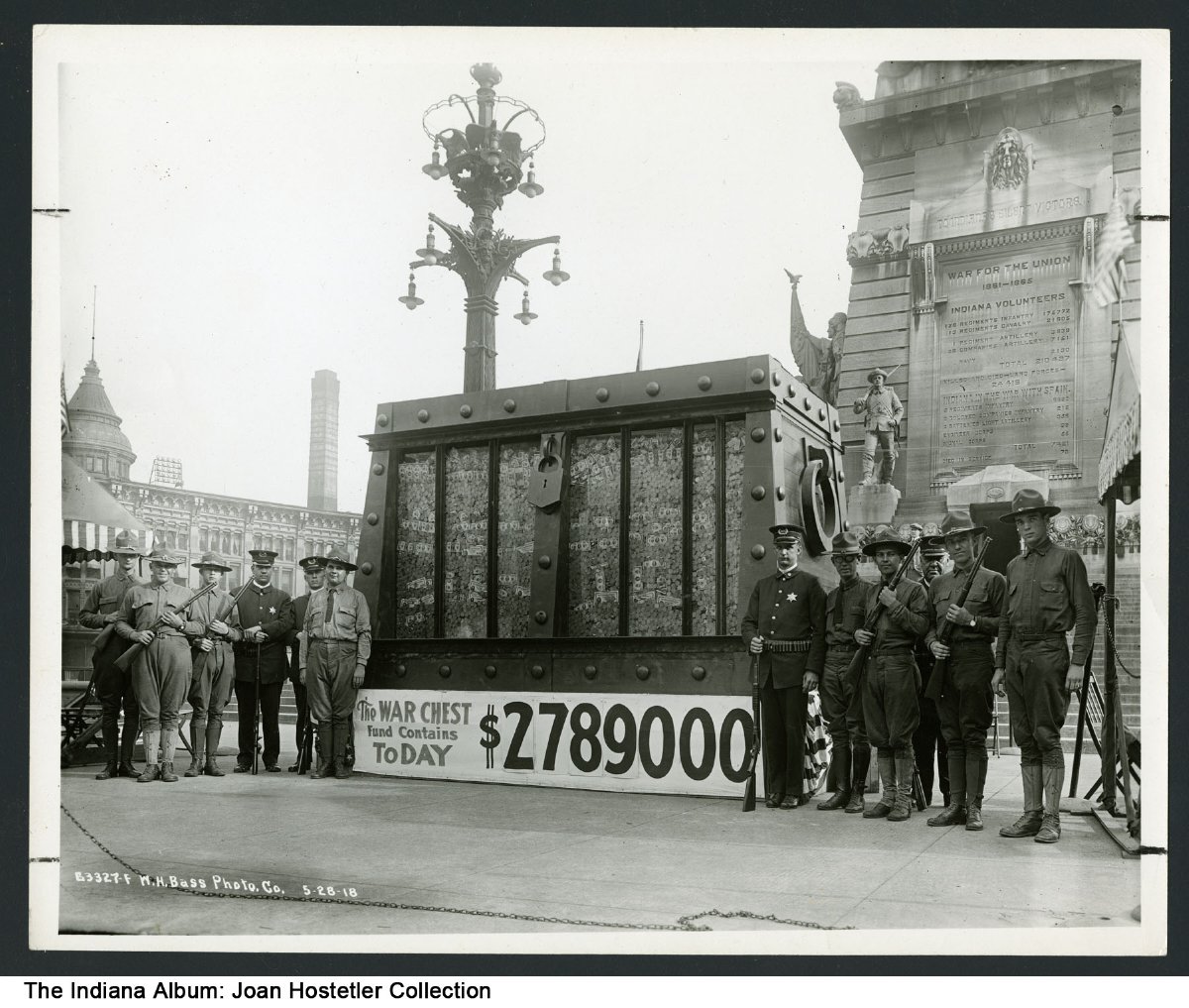Nationally and locally, the United Way traces its origins to World War I, when “war chests” developed across the country to reduce overhead expense, harness individual giving, and allow corporations to deduct wartime charitable contributions from taxable income. The war chest was so successful that 300 to 400 cities created them.

In 1918, organized the War Chest Board in Indianapolis. Campaign teams in Indianapolis reached 100,000 donors and raised the astounding sum of just under $3 million (over $51.4 million equivalent in 2020). Funds were donated to dozens of charities and relief organizations throughout the city.
The Cleveland Chamber of Commerce in 1913 created the model that cities would follow for federated giving throughout the U.S. It created a committee to evaluate, regulate, and streamline charity work. Other cities’ chambers of commerce tested the federated fundraising concept successfully. Most communities repurposed their war chest federations so that by the mid-1920s over 300 coordinated campaigns existed, many based on the Cleveland model. War chests became community chests or community funds, aligned with corporate philanthropy. Indianapolis was one of the cities that followed this pattern, creating the Indianapolis Community Fund in 1923. In 1926, all chests agreed to run their fundraising campaigns only once a year, coupled with intensive advertising, hallmarks of today’s United Way.
The Indianapolis Community Fund created in 1923 the Indianapolis Council of Social Agencies (later the ), a delegation of organizations with human service interests. The Community Fund succeeded early in the Great Depression, surpassing $1 million in 1931 (around $17 million in 2020), although giving stagnated through the 1930s. It revived to new levels with the outbreak of World War II and the addition of special programs to meet national and international crises. Following policies set by the national organization, the Indianapolis Community Fund enlarged its financial support from mostly local services to the inclusion of wartime and international services. During the war years, workplace campaigns and employee payroll deduction of donations became standard features.
Nationally, chests became United Funds after World War II and strengthened partnerships with corporations and labor through the 1950s. Funds raised in the U.S. tripled from 1946 to 1961. Beginning in 1958, national organizations, especially in health, were added to the campaign. The local federated fund became known as the Indianapolis United Fund at this time and incorporated these changes. Participation in federated fundraising enhanced the image of the good corporate citizen, what we today call corporate social responsibility, through donations and employee volunteering.
In the early 1960s, the United Way service area locally grew beyond Marion County to include Boone County, Hamilton County, Hancock County, Hendricks County, and Morgan County. United Way in the greater Indianapolis area added agencies and new services, but fundraising efforts could not keep pace with the great growth of the human services field.
On the national scale, Great Society programs, including Medicare, Medicaid, the Community Action Program, and amendments to Social Security, caused federal participation in nonprofits to increase dramatically. Federal spending on social welfare services rose tenfold over the next twenty years. This massive infusion of government funds threatened voluntary funding, especially federated funding. The United Fund presented no coordinated response to the landscape and its internal confusion eroded its credibility. Fundraising stagnated across the U.S. locally and nationally, and in 1969 the national campaign failed to meet its goal.

The 1970s brought success and focus. United Way of America (UWA) became the national organization, along with fundraising, donor designation options, advertising, corporate connections at the highest levels, and international expansion. In Indianapolis in 1978, United Way merged with the Community Service Council and began to emphasize greater effectiveness in service delivery. The agency in Indianapolis was instrumental in creating systems of service, funding new services as new needs emerged (such as legal assistance for persons with AIDS, and developing close working relationships with state and local government).
In 2008, United Way America proposed to lead the collaborative effort to cut by half the number of lower-income families that lack financial stability by 2018. The national organization directed that all funded agencies locally must demonstrate their ability to address four major issues: education, income, health, and basic needs.

The local agency moved into new quarters at 30th and Meridian streets in 2018. United Way of Central Indiana created three new Impact Funds, in 2019, to replace the previous Community Fund: the Basic Needs Fund, the Family Opportunity Fund, and the Social Innovation Fund. Programs focused on children include Read Up, which matches volunteers with local schools to help children with literacy skills, and Jump IN, which tackles childhood obesity. The United Way of Central Indiana partners with various community agencies in Indianapolis to create Centers for Working Families to provide low-income families with a full range of services to help them achieve long-term financial stability.
The local organization’s name has evolved along with national trends: the Community Fund (1923), Indianapolis Community Chest (1950), Indianapolis United Fund (1958), United Fund of Greater Indianapolis (1962), and United Way of Greater Indianapolis (1970-1986), and its present name of United Way of Central Indiana (UWCI, 1986-).
UWCI today employs a staff of 100. Its most recent annual revenue of approximately $55 million comes from individual contributions (56percent, private grants (19 percent), government grants (14 percent), investment income (10 percent), and service fees (1 percent). In January 2021, United Way of Central Indiana received a $25 million donation from novelist and philanthropist MacKenzie Scott. It was the largest gift from a single donor in the agency’s history to date.
The agency serves an estimated 400,000-500, 000 persons annually, through its own programs and its 84 affiliated agencies. In addition, UWCI provides donor-designated dollars to a wide range of unaffiliated organizations ($3.7 million across over 1,000 organizations).

Help improve this entry
Contribute information, offer corrections, suggest images.
You can also recommend new entries related to this topic.
